Wheat Belly Cookbook: 150 Recipes To Help You Lose The Wheat, Los
4.4
-
2,474 ratings
This cookbook companion to the New York Times bestseller Wheat Belly serves up 150 great tasting wheat-free recipes to help readers lose weight and beat disease.
Wheat Belly shook the foundations of the diet world when author and renowned cardiologist William Davis revealed that an epidemic of adverse health effects-ranging from minor rashes and high blood sugar to the buildup of stubborn belly fat (so-called "wheat bellies")-could be banished forever with one simple step: Saying goodbye to wheat. The Wheat Belly Cookbook takes readers to the next level with over 150 fresh and delicious wheatless recipes, including Breakfast Quesadillas, Braised Pot Roast with Vegetables, velvety Peanut Butter Pie—and surprising wheat-free hits like Blueberry French Toast, Bruschetta Chicken on Angel Hair,** **Spaghetti Bolognese and velvety Scones.
Additionally, readers will also learn how to:
- Dodge symptoms of "wheat withdrawal" experienced by about 10 percent of dieters, ensuring a smooth transition to this new healthy eating plan
- Set up their wheat-free kitchen, including important prep techniques, shopping lists, and strategies to get the whole family on board
- Avoid regaining a wheat belly while eating out at restaurants and parties—plus exciting meal ideas guests will love
Kindle
$12.99
Available instantly
Hardcover
$1.75
Paperback
$2.05
Ships from
Amazon.com
Payment
Secure transaction
ISBN-10
1443416339
ISBN-13
978-1443416337
Print length
336 pages
Language
English
Publisher
Collins
Publication date
December 17, 2012
Dimensions
7.5 x 0.84 x 9.12 inches
Item weight
10.6 ounces
Product details
ASIN :
B008HALLIK
File size :
8282 KB
Text-to-speech :
Enabled
Screen reader :
Supported
Enhanced typesetting :
Enabled
X-Ray :
Enabled
Word wise :
Enabled
Editorial Reviews
About the Author
Dr. William Davis, M.D. is a renowned preventive cardiologist and bestselling author of six books including the groundbreaking Wheat Belly, Wheat Belly Cookbook, Wheat Belly 30-Minutes (or Less!) Cookbook, Wheat Belly Total Health and Undoctored. Dr. Davis has built a substantial online and social media presence with 10 million visitors and over 30 million visits to his Wheat Belly Blog, a total of 400,000 followers on his Facebook pages, and 2.5 million views of his YouTube videos. His media appearances include the Dr. Oz Show on several occasions, CBS This Morning, Live with Kelly, a PBS special, and others. He lives in Fox Point, Wisconsin.
Sample
Excerpt. © Reprinted by permission. All rights reserved.
INTRODUCTION
Wheat is not the "healthy whole grain" it was pretending to be. Like a faithful spouse exposed as a philanderer and polygamist, wheat is not to be trusted. Held up as an icon of health, it is in reality a major contributor to the world's worst epidemic of obesity and an astounding list of health problems, from simple annoyances like dandruff to incapacitating conditions like dementia.
This is a cataclysmic revelation for most people: It's unsettling, it's upsetting, it's downright inconvenient. The condemnation of wheat is as paradigm shifting, earth shattering, and life changing as the emergence of the Internet, the packaging of collateralized debt obligations and the collapse of mortgage markets, the upheavals of the Arab Spring . . . events that shook core beliefs, upended comforting habits, and changed worldviews.
Wheat is the Enron of the food world, the tobacco industry all over again--frauds, both intentional and inadvertent, conducted on an international scale. Charming and engaging on the outside, sociopathic and destructive on the inside, it works its way into your life, wreaking havoc in every conceivable health-destroying way.
These are, for those of you unfamiliar with the arguments set forth in Wheat Belly: Lose the Wheat, Lose the Weight, and Find Your Path Back to Health (Rodale, 2011), undoubtedly bold assertions that fly in the face of nutritional wisdom. The Dietary Guidelines for Americans issued by the USDA and the US Department of Health and Human Services, as well as the American Heart Association, the American Diabetes Association, and the Academy of Nutrition and Dietetics all agree: Healthy whole grains should make up a substantial portion of your diet.
This is colossally bad advice. "Eat more healthy whole grains" is among the biggest health blunders ever made in the history of nutritional advice. Modern health care, treating millions of people at the cost of hundreds of billions of dollars every year for hypertension, high cholesterol, obesity, arthritis, acid reflux, irritable bowel syndrome, fibromyalgia, migraine headaches, depression, diabetes, various forms of neurological impairment, and on and on, is really treating . . . wheat consumption. And the endlessly repeated advice to eat more "healthy whole grains" fuels this fire, much to the appreciative applause of the pharmaceutical industry. After all, the pharmaceutical industry funds a good part of the wheat lobby promoting and propagating this message. Oh, you didn't know that? Yes, a long list of drug manufacturers have close financial ties to the organizations that lobby Congress, help establish school lunch policy, and get cozy with the USDA to maintain the lofty nutritional role of "healthy whole grains."
And, yes, the clinical studies documenting these arguments have already been performed, but rarely do they make the light of day in media supported by Big Food, who count wheat products among the handful of commoditized ingredients, subsidized by the US government, that serve as the basis for most processed foods.
In health, as in software, we are living examples of the principle of garbage in, garbage out. Put this stuff, the creation of geneticists from the 1960s and 1970s, into your body, and you get all manner of unanticipated health effects.
Since the release of Wheat Belly, I have become convinced that not only is this an incredibly big issue for health, the situation is worse than it first appeared. It has affected far more people than I originally anticipated and to such an extraordinary degree that it is difficult to overestimate the severity of this problem. This is no fad that will flare and then burn out, much as the misguided low-fat notion has. This is not a dietary precept like "get more fiber." It is an exposure of the genetic and biochemical changes introduced into this common foodstuff, all in the name of increased yield-per-acre, but with no questions asked about its suitability for human consumption.
We are, in effect, experiencing the consequences of a grand agricultural experiment gone sour.
Hey, Marlboro Man: Have a Bagel!
Remember this? "According to a nationwide survey: More doctors smoke Camels than any other cigarette"? In the mid-and latter 20th century, the national discussion went from gushing about the pleasures and health benefits of smoking, to studies documenting the health damage caused by smoking, to executives denying any wrongdoing to Congress, to uncovering concealed documents demonstrating the industry's knowledge of the adverse health effects of smoking decades earlier.
We are reliving the tobacco experience with wheat in its place. I believe that smart food scientists stumbled on the appetite-stimulating effect of the gliadin protein in wheat 25 years ago. How else do we explain why wheat is in virtually all processed foods, from tomato soup to licorice? In 1960, you would have found wheat in bread, rolls, and cakes--obvious places that make sense. Go up and down the food aisles in your local supermarket in the 21st century, and you will find that nearly all canned, packaged, and frozen foods contain wheat in some form. Is wheat that necessary for taste, or for texture? I don't think so. I think it's put there for one reason: to stimulate your appetite and increase sales.
The transformation of the gliadin protein in newly created strains of wheat was accompanied by an increase in calorie consumption of 440 calories per day. By putting wheat in everything, the food industry, especially Big Food, ensured that you come back for more. Just as tobacco manufacturers increased nicotine content of cigarettes to ensure addiction, so adding wheat to every processed food created addictive behavior in response to all things wheat. Eating 440 more calories per day, 365 days per year--not only does that add up to a lot of calories and a lot more food consumed, it adds up to a lot more weight. (Using a simple calories-in calculation, this yields 160,000 calories, or 45.8 pounds gained in a year. This is an oversimplification, since calories-in, calories-out is a flawed concept, but it nonetheless illustrates how substantial this effect can be.) The introduction of the new form of gliadin was followed shortly thereafter by a nationwide increase in weight. After people gained 30, 50, 60, or more pounds, an explosive surge in diabetes followed. We are now in the midst of the worst epidemic of diabetes ever experienced by humans, such that the curve showing the number of people with diabetes is in a vertical climb straight upward, a trajectory that is likely to engulf your children and grandchildren.
The gliadin protein of wheat ensures that wheat products, such as whole grain or white breads, bagels, and muffins, are addictive: They generate a need for more . . . and more, and more. Gliadin is an opiate, you will discover, with its own form of euphoria and its very own opiate withdrawal syndrome when wheat consumption stops that can also be provoked with opiate-blocking drugs.
So the inadvertent transformation of wheat gliadin into a much more potent appetite stimulant, recognized quickly by observant food scientists, brought us here, to this overweight, diabetic situation that now plagues Americans and much of the rest of the developed world . . . while we are advised to eat more "healthy whole grains." No doubt, many people profited handsomely--and continue to do so--from this message, but the public has paid the price, both with their pocketbooks and their health.
There's Power in Them Tweets
Since the release of the first Wheat Belly, social media has served the role of a worldwide stage for these arguments to play out.
Some things, when enacted in real life in real people, are so consistent and powerful that, despite their anecdotal nature, they serve to reinforce what we learn through scientific observation. If I hit my head with a hammer and it hurts, and my head stops hurting when I stop hitting it, do I need a double-blind, randomized clinical trial to prove that hitting my head with a hammer causes head pain? The association is so consistent and obvious that you can safely accept the premise that the hammer is the cause. Likewise, eliminating wheat has been demonstrated, through the thousands of people who have embraced these ideas, to produce life-changing transformations of health and weight that most thought were impossible, allowing them to throw away multiple medications and leave behind years of pain, wheezing, diarrhea, cramps, swelling, fatigue--within days of saying goodbye to their bran muffins or breakfast cereal.
In the Middle East, social media allowed the masses to organize, communicate, and overthrow despotic dictators. In no other time in history could dissent disseminate so rapidly, revolt be organized within hours. Likewise, social media is now showing us, on an unprecedented scale and abbreviated timeline, that rejecting all things wheat is among the most powerful and liberating health strategies imaginable. We purge this Muammar Gaddafi of diet using the facility and speed of Twitter, Facebook, and other electronic media, spreading the word of dietary revolution using the very same tools.
This is not a popular message at the USDA, or in the halls of Big Food and Big Agribusiness. It's not uncommon, for instance, for agribusiness giant Monsanto to spend more than $2 billion per quarter to lobby the federal government to influence policymakers--and that's just one company. Dollar for dollar, we cannot even begin to compete with such forces. Ah, but we can talk to each other and share our experiences, something that these dominating corporate forces are unlikely to do with us.
Lose the Wheat, Lose the Weight . . . and the Acid Reflux, and the Edema, and the Mental "Fog" . . .
Much like when you stop hitting your head with a hammer and the headache miraculously goes away, so eliminating all wheat from the diet is followed by the majority of people experiencing abrupt and substantial weight loss along with relief from a long list of health conditions.
In other words, the proof of this concept is in your own hands, a simple rearrangement of food priorities in your own pantry. You don't have to wait for a large-scale clinical trial to know whether this is relevant to your health situation. If you decide to wait for national advice to embrace this concept, you are going to wait a very, very long time. How do official agencies undo the disastrous advice of the last 40 years without losing credibility, without incurring legal liability for the unimaginable economic damages--and without losing the revenue stream that this corrupt message has generated? You don't have to wait. You can start the process and know within days whether this thing called wheat has been to blame for your health and weight.
The total effect experienced in eliminating wheat is greater than the sum of its parts: It's a 2 + 2 = 11 phenomenon. That's no typo. Getting rid of wheat is that big. Despite our knowing about many of the undesirable changes introduced by geneticists into modern wheat, the health changes--health transformations--experienced by most people who say goodbye to wheat are often far greater than we'd predict. It makes for some of the most compelling success stories in weight and health you could imagine.
Gluten-Free . . . and Other Blunders
A growing number of people are declaring themselves gluten free, thereby buying and consuming gluten-free foods.
Big mistake. Yes, it's a very good thing to avoid the gluten from wheat. But this can take you down the path of gluten-free processed foods. Oddly, the majority of manufacturers of gluten-free foods have chosen to base their products--with rare exceptions--on rice starch, cornstarch, potato starch, and tapioca starch. While they may provide a reasonable facsimile of gluten-containing wheat flour-based products in taste and texture, they are among the few foods that raise blood sugar even higher than the high levels generated by wheat products. In other words, gluten-free multigrain bread or gluten-free pasta, from the perspective of high levels of blood sugar and its consequences, are poor choices as replacements for wheat.
So we should be wheat free and gluten free, but also free of gluten-free foods made with junk carbohydrates.
A bit confusing, yes. This was part of my motivation for adding the Wheat Belly Cookbook to the discussion, to help you recreate delicious foods without wheat and without the rice starch, cornstarch, potato starch, and tapioca starch of commercial gluten-free foods. The recipes presented herein are tasty, don't screw with blood sugar, don't trigger appetite, and are truly healthy--a novel concept!
Lettuce and Cardboard?
For many people, the prospect of giving up wheat is daunting, even downright terrifying, especially since wheat comes with its very own withdrawal syndrome. Not only might you be deprived of something that yields an addictive relationship, but what foods will remain? Will you starve? Will you have to live on lettuce, cardboard, and tasteless replacement foods?
Not at all. As many wheat-free people will attest, foods minus wheat are actually more enjoyable. A fundamental change occurs when you remove this addictive food: You enjoy food for its own sake, not because there is an appetite stimulant present making you eat anything you can get your hands on. Taste is heightened: You are better able to discern the nuances of foods, but also more sensitive to sweetness, with formerly tasty treats now sickeningly sweet. You are less hungry to the tune of 440 fewer calories per day; what you eat, you enjoy more since you are having less.
Foods can be wonderfully varied without wheat. In addition to beef burgundy and pizza, you can have muffins, cookies, pies, scones, and other former wheat-containing foods, made using truly healthy ingredients. These are among the 150 recipes in the Wheat Belly Cookbook.
What this is not is a gluten-free cookbook. No food manufacturer or author of a gluten-free cookbook I know of yet understands the principles of healthy wheat-free, gluten-free eating sufficiently to craft truly healthy gluten-free food. If you want to get fat and diabetic, develop cataracts and arthritis, and grow a belly full of inflammatory visceral fat, eat gluten-free substitutes sold in stores or follow the recipes in the newest gluten-free cookbook. So the recipes I've developed here are indeed free of wheat and gluten, limited in carbohydrate exposure--and truly healthy.
Quit Your Bellyaching!
"Don't you miss it?" and "Aren't you tempted to eat a doughnut?" are among the common questions from those contemplating a life sans wheat.
If, by the end of these opening chapters, you aren't eyeing your beloved multi-grain bread or onion ciabatta with suspicion or outright horror, then I haven't done my job. I see my role as exposing these arguments to the light of day for all to see, not just the tarted-up, hunky-dory version presented to us by those who profit from influencing the message. My hope is that, by the time you have finished reading the first few chapters, you will understand that not only is this creation of genetics research awful for weight and health, it is downright deadly. Removing it is . . . liberating. It's the rainbow after the storm, remission after cancer treatment, viewing bright colors after a lifetime of blindness.
Be sure to read the success stories that I've peppered throughout the recipe section detailing many of the compelling tales of health and weight turnarounds that have come my way ever since this message has gained an international audience. Read real stories of dramatic weight loss, relief from crippling health conditions, transformations of children's behaviors—all from people denying themselves the effects of this creation of modern genetics research called wheat.
“Fried” Parmesan-Crusted Chicken
Kid-Friendly Prep Time: 10 minutes Total Time: 45 minutes Makes 4 servings
Who doesn’t love fried chicken? This “fried” chicken is easy to whip up in minutes and will serve you well with the kids.
Make the “breading” as bland or spicy as you or your family desires by reducing or loading up on the oregano and paprika. For added spiciness, add some hot-pepper sauce to the egg mixture or ground red pepper or chipotle pepper to the dry “bread” crumb mixture.
It’s best to reheat any leftovers in the oven or toaster oven, rather than the microwave, because the “breading” has a tendency to get soggy when stored.
2 eggs 2 tablespoons extra-virgin olive oil 1 cup ground flaxseeds 1/2 cup grated Parmesan cheese 1 teaspoon onion powder 1 teaspoon dried oregano 1/4 teaspoon paprika 1/2 teaspoon sea salt 2 pounds chicken drumsticks
-
Preheat the oven to 375°F. Coat a large baking pan with cooking spray.
-
In a shallow bowl, whisk the eggs and oil until blended.
-
In another shallow bowl, combine the flaxseeds, Parmesan, onion powder, oregano, paprika, and salt and mix thoroughly.
-
Dip each drumstick into the egg mixture to coat and then roll in the flax mixture, shaking or tapping off any excess. Place in the baking pan, leaving space between each drumstick.
-
Bake for 35 minutes, or until a thermometer inserted in the thickest portion registers 170°F and the juices run clear.
Per serving: 516 calories, 43 g protein, 10 g carbohydrates, 35 g total fat, 7 g saturated fat, 9 g fiber, 610 mg sodium
Read more
About the authors
William Davis
Dr. Davis provides solutions to health problems by addressing the microbiome, massively disrupted in modern people. He shows readers in his Super Gut book, for instance, how to restore important lost microbes lost such as Lactobacillus reuteri, restored by using a unique method of yogurt fermentation that smooths skin and reduces wrinkles, restores youthful muscle and strength, deepens sleep, reduces appetite and provides many other youth-preserving and anti-aging effects. In Super Gut and in his website, www.DrDavisInfiniteHealth.com, he provides additional do-it-yourself-at-home strategies for benefits such as improved mood, improved athletic performance, better sleep, heightened immunity, and improved body composition.
Dr. William Davis is also responsible for exposing the incredible nutritional blunder made by "official" health agencies: Eat more "healthy whole grains." The wheat of today is different from the wheat of 1960, thanks to extensive genetics manipulations introduced to increase yield-per-acre. Eliminating wheat yields results beyond everyone's expectations: substantial weight loss, correction of cholesterol abnormalities, relief from inflammatory diseases like arthritis, better mood, reduced blood sugar with many type 2 diabetics being freed of insulin and other drugs, all articulated through his Wheat Belly series of books. He is also a champion of individual self-directed health, as discussed in his Undoctored book.
Dr. Davis lives what he preaches, not having indulged in a wheat-containing bagel, ciabatta, or pretzel in many years, while consuming various fermentation products that yield unexpected health benefits. Dr. Davis lives in Milwaukee, Wisconsin.
Read more
Reviews
Customer reviews
4.4 out of 5
2,474 global ratings
Sluzy
5
Genius of a Cook Book
Reviewed in the United States on March 12, 2015
Verified Purchase
It took me a while to get started with this cookbook. You know you have to rearrange your kitchen supplies and appliances each time you start a new kind of food regimen. But when I did I discovered that this diet is good for my dietetic husband and of course, for my heart problemed mother.
A little digression: I must say that I also discovered, not from this cook book but by reading the side effects of my my mom's prescriptions that they are causing all of her health problems, including irregular heartbeat, dizziness, tunnel vision, ect.., The latter ones cause her to fall, which is the number one reason, falling, for seniors to die. Can one conclude that we have a health care industry that causes disease, I would say yes. We eliminated all but one of my mom's prescriptions with herbs and food alone. Her indigestion prescription actually caused recurring indigestion. All disease starts in the gut!
But food and herbs, and such things as PEMF machines (thins the blood, ends blood coagulation), can be used with safely to bring about health. None of which the AMA recommends for health problems. Is Big pharma attempting to keep the AMA doctors in money due to continuous health problems from their disease causing chemicals? I think so. (Would this not be a War Crime and Crime Against Humanity as defined by International Law? Answer: Yup! Thank god there are two tribunals coming up which will deal with this. I can't wait.)
Now back to the book. Reading some of the excellent information about ingredients, such as cocnut flour pgs. 66, 67-68, etc., leads me to believe that this book was written by a professional in food science, and not Dr. Davis. If so, I would like to know her name for other books or papers from her.
Recipes are genius. The bread, while a bit expensive (you can search for cheaper sources of ingredients) and time-consuming sometimes are great. I do wish she had included more salads, of the raw (for food-digesting enzymes) and green leafy type, especially cole slaw which my husband loves. I love the wasabi cream sauce which I used much more wasabi and vinegar than the recipe calls for, for my grilled corned beef and Swiss cheese sandwiches. Recipes are very filling, especially the bread, and no indigestion. I can live with this diet and all the while heal my family and myself.
And thank you Dr. Davis for caring about our health and not just going along with the program. You and Dr. Perlmutter are the best things going on in health in a long time.
Read more
6 people found this helpful
DeeDeep
5
★THE TRUTH BEHIND WHEAT ★ A MUST READ-PLUS A TON OF DELISCIOUS UNIQUE RECIPES ★
Reviewed in the United States on October 6, 2016
Verified Purchase
I Don't Usually Buy Cookbooks. Usually, I Just Read the Recipes on the Web or Read a Kindle Book and I'm Developed Hundreds of My Own Gluten Free Recipes and Converted Recipes to Gluten Free. The Only Reason I Purchased This Book Was Because of All The Hype I'd Heard About the Author and His Books. I Pretty Much Thought I Was an Authority on Gluten, Celiac Disease and the Problems with Wheat and Grains in the Diets of People, Even Those Without Allergies and Intolerances. There Couldn't Possibly Be Anything I'd Learn in This Book.
The Author Proved Me Wrong. Nearly 3 1/2 Years Ago, When I Went Totally Wheat Free and Lost 102 Pounds (I Also Cut Out Processed Foods and Ate No More Than 3 to 4 Ounces of Meat a Day) I Was Able To Go Off Narcotic Pain Meds, Cut Diabetic Medication over 80%, Arthritis Medication, 1600 mg Neurontin Daily and Medication for GERD . I Was Taking So Much Medication, I Had to Wean Off It and Still Had Withdrawal Side Effects That Were Terrible. I Still Have Allergies, Because I'm Allergic to So Many Foods & Substances. But, Going Wheat Free and Cutting Out Corn and Most Grains Helped All My Other Problems Tremendously and Even Improved Most of My Allergies and COPD. At the Time I Went Wheat Free, Doctors had me on 27 Meds. I'm Now on 6 and That's Mainly for Allergies & Asthma and Blood Pressure (the Allergy Meds Kick That Up) Some Days My Blood Sugar is So Low, I Have to Go Without Any Medication. DIET IS MEDICINE.
When I Read This Book, There Were a Lot of Things I Learned that I Didn't Know and So Many Good Recipes, I've Dog Eared About a Quarter of the Book. I Come Back to it Again & Again. Of All the Great Recipes, Probably My Favorite is the TURKEY SAUSAGE Recipe. You Make it With Ground Turkey and It's Fantastic. That One Recipe is Worth the Price of the Book. I Make It Almost Weekly and When My Store Has a Manger's Special on Ground Turkey Cheap, I Make Up a Bunch Of The Patties and Freeze Them. Then, I Like To Crumble One Up Sometimes in a Few Egg Whites with a Little Nutritional Yeast. It's Much Better Than It Sounds. Of Course, You Could Use Cheddar Cheese, Instead of The Nutritional Yeast or Omit it Entirely. I've Even Played Around With the Ingredients and Made a Version of Italian Sausage Out of that I Love on My Cauliflower/Zucchini Pizza Crust.. The Book is Full of Recipes You'll Go Back To Again and Again.
Several Years Ago, I Thought I Had No Problems With Wheat. My Grandmother Had Celiac Disease, But I'd Been Tested For "Wheat" as Part of My Allergy Testing and it was Negative. It Wasn't Until a Few Years Later That an Immunologist Told Me That You Can STILL Be Allergic, Because You're Only Tested For 3 Allergens and There are 27 Allergens in Modern Wheat. You Only Get Tested For the Three. So, Do Not Assume that Because Your Allergy Tests Showed You Weren't Allergic That You're Free and Clear. I Thought it Was Odd That I Was allergic to Just About Every Kind of Tree, Every Kind of Grass, Corn, Every Other Kind of Grain I Was Tested For, But Not Wheat. Once I Abstained From Wheat, My Entire System Changed.
Plus, this Author Has Included Helpful Sections That Are REALLY Helpful. He Even Included a Section on Where to Go on the Internet to Find Out if Your Meds Have Wheat In Them and I Found Out TWO Of Mine Had Wheat And One Had Guar Gum In It as a Binder That I'm Extremely Allergic To. I've Asked My Pharmacist Over And Over and Was Told There Was No Way Of Knowing the ADDED ingredients in the Medications (Binders, Etc.) But Apparently There Is. If You Buy and Read Just ONE BOOK on Celiac Disease or Wheat Sensitivity, This Should Be It. ★Thank You For Reading My Review.
Read more
25 people found this helpful
Darla J.
5
A wonderful informative guide to living wheat free!
Reviewed in the United States on March 13, 2013
Verified Purchase
The Wheat Belly cookbook consists of a brief overview of the book Wheat Belly, plus 150 recipes to help you on your way to a wheat free diet.
In 2011 I was diagnosed with a slow moving form of incurable leukemia. One of the first things I did was to eliminate all gluten and wheat from my diet, along with all processed foods. I immediately felt better, lighter, more energetic...as if the lights were coming back on inside my body.
Within just a couple of months I had lost the 30 extra pounds I had been carrying around with me for the past several years, my brain fog disappeared, my skin started to glow, my hair responded by trading in its dull texture for shine and health. The transition was nearly miraculous.
I still have leukemia, but I am living now, instead of barely surviving. And while it has not gone into spontaneous remission, it has stalled instead of continuing to move forward in severity as it should have done.
I would say that this book could easily work as a stand alone. All of the important information from Wheat Belly can be found here, plus the recipes to get you going.
If you are tired of feeling sick and tired but cannot find the reason, tired of paying for physician visits when they continue to tell you there is nothing wrong, or tired of living unwell with a chronic illness, weight gain, or autoimmune disease, this book is for you.
Prepare to be outraged by the facts. We are being fed a line of bull when it comes to what we should be putting into our bodies. The food pyramid is backwards, inside out, and upside down. The author contends that wheat, which he terms a "Frankengrain" due to the fact that it has been modified beyond recognition, is not the wholesome food it is portrayed to be. On the contrary, the protein found in this wheat has properties that are addictive, keeping us coming back for more..and more...and more...to an excess that shows up on our waistlines and in our bodies overall health, and worse it is found in nearly every food on the grocery store shelves.
The author explains how our expensive medical maladies such as "...hypertension, high cholesterol, obesity, arthritis, acid reflux, irritable bowel syndrome, fibromyalgia, migraine headaches, depression, diabetes, various forms of neurological impairment, and on and on..." is caused by wheat consumption.
Better than all of the information though are the recipes. Even a bakery section which provides instruction for creating things like brownies and chocolate chip cookies that are wheat free, sugar free and are really really tasty!
The Wheat Belly Cookbook is really all you need to understand the why and the how of living wheat free.
Read more
11 people found this helpful
Julie G.
5
So many of my minor health problems now gone as result of what I learned about wheat in this book! Plus great recipes, too.
Reviewed in the United States on April 12, 2014
Verified Purchase
My husband got Wheat Belly from the library before Christmas based on a conversation he had with a co-worker who credited the gluten-free diet with many of her health improvements. I'm 50 yrs old ; As a midwesterner with plenty of family and friends who farm corn, soybeans and wheat, I admit I wasn't happy to read all the food scientists and manufacturers have done in genetically modifying such important grains. But wow, learning about today's wheat and how it's modified and changed into...basically a toxin--got my attention. So I decided to go gluten-free for just 10 days. If I don't feel any different, I thought, at least I tried it. WELL I am 9 weeks into totally gluten-free and am AMAZED at how much better I feel!!! I've had chronic candida for 5-6 years now (oral thrush, yuck) and developed toe nail fungus 3 years ago. Spent a few hundred dollars going to dermatologists and podiatrists and other doctors for prescriptions and treatments trying to rid myself of these problems. Within one week of going gluten-free, my oral thrush AND my toe nail fungus were visibly improved. Also, I lost 2 lbs that first week and felt so much more energetic, even into the late evening. More mentally focused throughout the day too! over the past several weeks my thrush and toe nails continue to improve and I am looking forward to wearing open-toe sandals this summer for the first time in 3 years! also, I've lost 9 lbs now and have made a new friend with a seamstress because I've had to take in the waist of 7 pairs of suit slack and 2-3 skirts I need to fit right for work. Losing weight around my waist, and without exercise or counting calories, was another big surprise! There are several good recipes in this book that are easy to make (we like the spinach tomato quiche, the pancakes, and the cauliflower mashed potatoes, yummy) bottom line: give the gluten-free diet a try for 10 days and see for yourself!!
Read more
Another Tigger
5
Emmer and einkorn are more like the original wheat
Reviewed in the United States on September 21, 2014
Verified Purchase
I have been using this cookbook A LOT! Also appreciate his explanations which tell WHY our modern wheat is so hard on us (and if it is hard on us, it is hard on our pets as well). 48 chromosomes in diploid order (3 strands). Shoot, our bodies only have two strands of chromosomes. Three is practically a monster.
The big list of massive immune disorders surprised even me. Spinal stenosis, stuttering, and many more are discussed, and "Franken-wheat's" role in them is exposed. Turns out even Spelt isn't all that old, in the scheme of things, at 24 chromosomes. Emmer and einkorn are more like the original wheat, however wheat STILL can inflame joints, cause asthma, and a list of other troubles. If you think the old-time wheat of the Egyptians did them any good, Google what they found when they scanned many old Egyptian mummies. (What they rarely found was cancer by the way.)
This cookbook has been especially helpful to me, as I have had to eat the "Paleo Diet" way and will be doing that for the rest of my life. Grains and sugars are no longer my friend (sigh). But it turns out that our modern wheat is no one's friend either!
No one wants to give up pancakes, waffles, bread, pie, etc. for the rest of their lives! Well, I surely do not. This cookbook gave me a good bread recipe, as well as recipes for other "traditionally floury" things. Pie crust, pancakes, waffles, cookies, etc. I like these recipes better than those which utilize coconut flour or the "gluten free" rice flour mixes because this has far less simple carbs and frankly, I got really, REALLY tired of the taste of coconut after a while. It was EVERYWHERE when you try baking with it.
This is my #1 "go-to" book for day-to-day eating. It tells you what you will want to avoid and why. It tells you what to substitute in its place so you are not going without.
The benefits? Well, I cook from it, on the Paleo Diet, but do minimize fruit, and eat half an avocado with my daily salads (avocado seems to cause the body to burn fat, once you have rebuilt the cells which make your body able to utilize protein, as carbohydrates are the fuel of choice). I have been burning fat day and night--however it took my body about 2-3 weeks to organize itself to be able to burn the fat in the first place.
This is the one cookbook that I wanted a paper copy of, and the only one I keep on the kitchen counter.
Read more
13 people found this helpful
Top William Davis titles
View all
Wheat Belly Total Health: The Ultimate Grain-Free Health and Weight-Loss Life Plan
4.4
-
1,589
$9.99
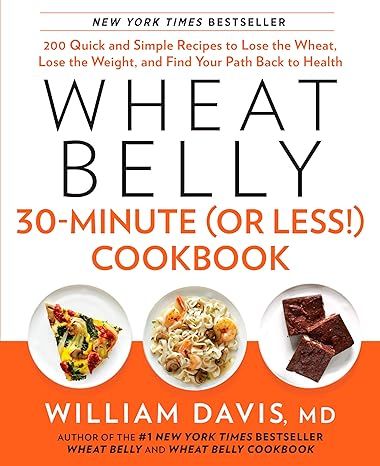
Wheat Belly 30-Minute (Or Less!) Cookbook: 200 Quick and Simple Recipes to Lose the Wheat, Lose the Weight, and Find Your Path Back to Health
4.4
-
2,446
$8.99

Wheat Belly 10-Day Grain Detox
4.4
-
1,229
$3.94

Undoctored: Why Health Care Has Failed You and How You Can Become Smarter Than Your Doctor
4.6
-
1,259
$0.99
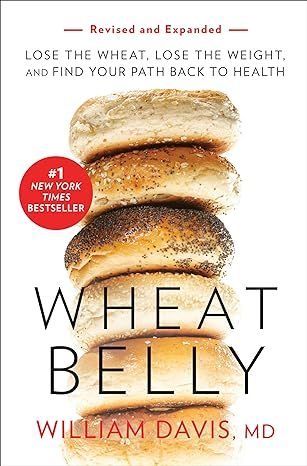
Wheat Belly (Revised and Expanded Edition): Lose the Wheat, Lose the Weight, and Find Your Path Back to Health
4.6
-
2,034
$8.99
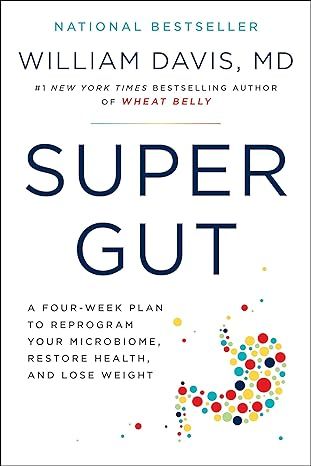
Super Gut
4.6
-
1,959
$0.99
Best Sellers
View all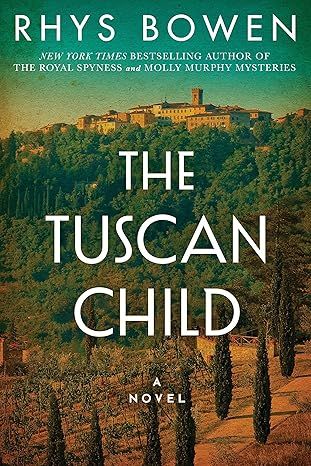
The Tuscan Child
4.2
-
100,022
$8.39
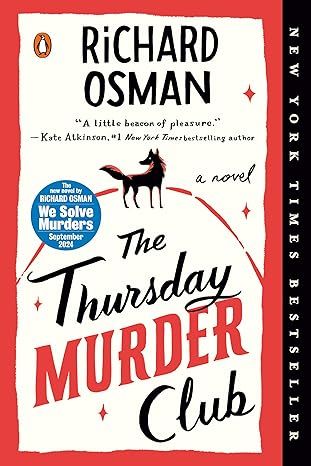
The Thursday Murder Club: A Novel (A Thursday Murder Club Mystery)
4.3
-
155,575
$6.33
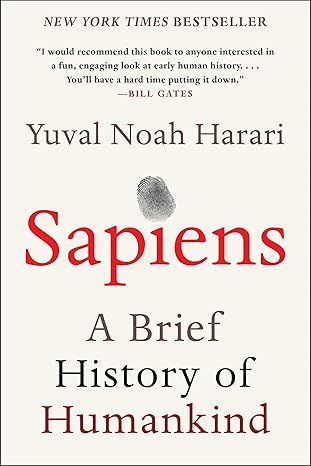
Sapiens: A Brief History of Humankind
4.6
-
140,302
$13.49
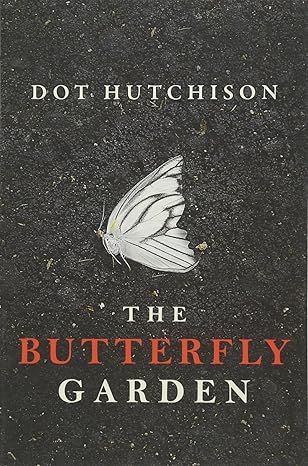
The Butterfly Garden (The Collector, 1)
4.3
-
88,556
$9.59

Things We Hide from the Light (Knockemout Series, 2)
4.4
-
94,890
$11.66
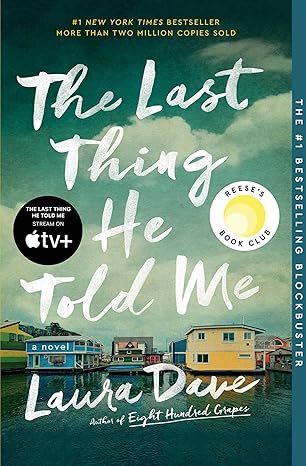
The Last Thing He Told Me: A Novel
4.3
-
154,085
$2.99

The Perfect Marriage: A Completely Gripping Psychological Suspense
4.3
-
143,196
$9.47
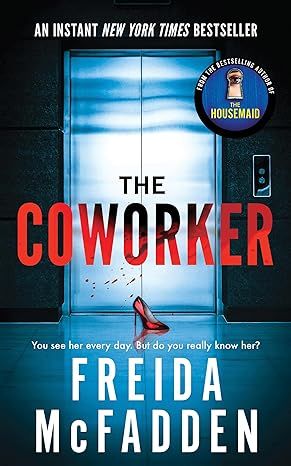
The Coworker
4.1
-
80,003
$13.48

First Lie Wins: A Novel (Random House Large Print)
4.3
-
54,062
$14.99

Mile High (Windy City Series Book 1)
4.4
-
59,745
$16.19

Layla
4.2
-
107,613
$8.99
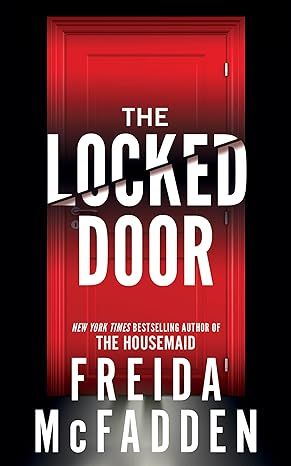
The Locked Door
4.4
-
94,673
$8.53

